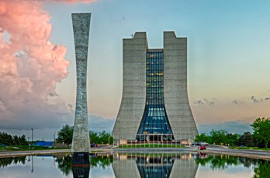Speaker
Mrs
Hélène Mainaud-Durand
(EN/ACE Large Scale Metrology, CERN)
Description
At CERN, stretched wires are widely used for over 50 years for the alignment of accelerators. Nowadays, 0.4 mm diameter conductive wires are used for the monitoring and alignment of machine elements, together with capacitive wire positioning sensors. Wires are used as well for wire-offset measurements during the radial smoothing of the magnets over 150 m.
In this paper, we show that using common stretched wire in a 3D longitudinal network improve the geometry of the geodetic network, both in terms of accuracy and reliability. In this work, we use a polypropolen braided rope type, lightly tensed wire with a sag value of the order of half a meter. In our 3D longitudinal test network, angle and distances measurements performed between points using a total station constitute the basic network. In addition, vertical and horizontal angle measurements are performed on marks located on the wire to densify the network. In the first part of this contribution, we detail the functional models developed to take into account points on the wire. We also describe a test campaign carried out with a wire stretched over 50 m, within a 5 m wide and 60 m long network. In the second part, we present and discuss our results, and show that using a stretched wire can improve significantly the accuracy and reliability of the network points determination.
Primary authors
Mrs
Hélène Mainaud-Durand
(EN/ACE Large Scale Metrology, CERN)
Mr
Stéphane Durand
(Cnam/GeF)
Mr
Thomas Touzé
(Institut G2C, HEIG-VD)
Mr
Vivien Rude
(EN/ACE Large Scale Metrology, CERN)
